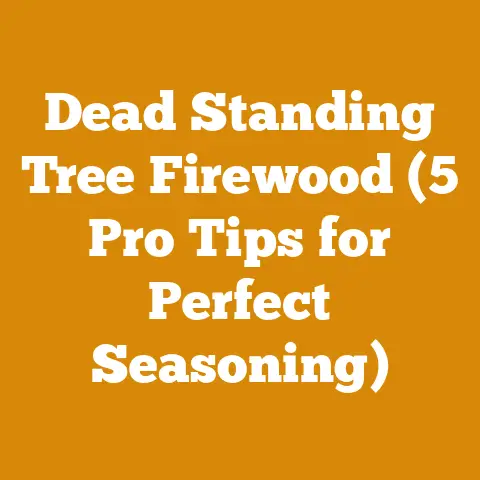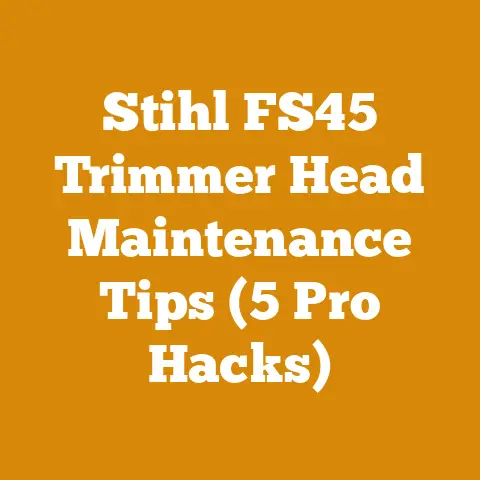Wood Burner Brush (5 Soft Tips) for Gentle Chimney Cleaning
As someone who’s spent countless hours wrestling with logs, splitting wood, and tending to the comforting crackle of a wood-burning stove, I can tell you that there’s immense satisfaction in responsibly sourcing and preparing your own firewood. But let’s be honest, the value for money you get from a wood-burning stove isn’t just about the heat; it’s about the independence and self-sufficiency it represents. And central to maintaining that value, and the safety of your home, is a clean chimney. That’s where the “Wood Burner Brush (5 Soft Tips) for Gentle Chimney Cleaning” comes into play. In this article, I will share my experiences with using a wood burner brush and offer insights on how to clean your chimney safely and effectively, ensuring your wood-burning stove continues to provide warmth and value for years to come.
The Importance of Chimney Maintenance: More Than Just Peace of Mind
Before diving into the nitty-gritty of using a wood burner brush, let’s talk about why chimney maintenance is so critical. I remember one particularly cold winter a few years back. I’d been burning wood non-stop, and, like a fool, hadn’t checked my chimney in ages. One evening, a neighbor noticed thick, dark smoke billowing from my chimney – far more than usual. Turns out, I had a significant creosote buildup, and it was dangerously close to a chimney fire. That was a wake-up call I won’t soon forget!
Creosote is a byproduct of burning wood, and it accumulates in your chimney over time. It’s highly flammable, and a chimney fire can quickly spread to your home. According to the National Fire Protection Association (NFPA), chimney fires are a leading cause of residential fires in the United States, with heating equipment (including wood stoves) being a primary factor. They state that failure to clean is a leading cause of chimney fires. Regular chimney cleaning not only prevents fires but also improves the efficiency of your wood-burning stove. A clean chimney allows for better airflow, resulting in more complete combustion and less smoke.
Types of Creosote and Why It Matters
Creosote comes in three stages:
- Stage 1: Light and flaky, easily removed with a brush.
- Stage 2: Hard, shiny, and tar-like, requiring more aggressive cleaning.
- Stage 3: Glazed and extremely difficult to remove, often requiring professional intervention.
The soft-tipped wood burner brush is primarily designed for removing Stage 1 creosote and preventing the buildup of Stage 2 and 3. Regular cleaning with this type of brush helps keep your chimney in good condition, minimizing the risk of dangerous creosote accumulation.
Understanding the “Wood Burner Brush (5 Soft Tips)”
This type of brush is specifically designed for gentle chimney cleaning. The soft tips are typically made of nylon or polypropylene, making them suitable for most chimney liners, including stainless steel. The “5 Soft Tips” designation simply refers to the number of individual brush heads or sections included, which can be connected to create the desired length for your chimney.
Advantages of Soft-Tipped Brushes:
- Safe for Chimney Liners: Unlike wire brushes, soft-tipped brushes are less likely to scratch or damage your chimney liner, especially stainless steel.
- Effective at Removing Loose Creosote: They excel at dislodging light, flaky creosote (Stage 1).
- Easy to Use: They are generally lightweight and flexible, making them easier to maneuver in the chimney.
Limitations:
- Not for Heavy Buildup: They are not effective at removing hard, tar-like creosote (Stage 2 or 3).
- May Require More Frequent Cleaning: Because they are less aggressive, you may need to clean your chimney more often.
Step-by-Step Guide to Chimney Cleaning with a Soft-Tipped Brush
Now, let’s get down to the practical aspects of using this brush. I’ve refined this process over years of trial and error, and I’m confident it will help you keep your chimney clean and safe.
1. Preparation is Key: Safety First!
- Choose the Right Time: Pick a calm day with minimal wind. You don’t want soot blowing everywhere.
- Gather Your Supplies: Besides the wood burner brush, you’ll need:
- Drop cloths or plastic sheeting to protect your flooring
- A dust mask or respirator to protect your lungs
- Safety glasses to protect your eyes
- Gloves to protect your hands
- A flashlight or headlamp to see inside the chimney
- A vacuum cleaner with a HEPA filter (optional, but highly recommended)
- Duct tape
- Protect Your Home: Cover the area around your wood stove with drop cloths or plastic sheeting. Seal off the stove opening with duct tape and plastic to prevent soot from escaping into your home.
- Dress Appropriately: Wear old clothes that you don’t mind getting dirty. Trust me, you will get dirty.
2. Accessing the Chimney: Top-Down or Bottom-Up?
There are two main ways to access your chimney for cleaning:
- Top-Down: This involves going onto your roof and inserting the brush from the top of the chimney. This method is generally preferred because it allows gravity to assist in the cleaning process. However, it can be dangerous if you are not comfortable working at heights.
- Bottom-Up: This involves inserting the brush through the stove opening. This method is safer but can be more challenging, especially for taller chimneys.
I personally prefer the top-down method, but only when the weather is clear and dry. If you’re not comfortable on your roof, definitely opt for the bottom-up approach or hire a professional.
3. Cleaning from the Top (If Applicable):
- Safety First: Ensure you have a secure ladder and follow all safety precautions for working on a roof.
- Assemble the Brush: Connect the brush sections to create the appropriate length for your chimney. Start with a few sections and add more as you go.
- Insert the Brush: Carefully insert the brush into the chimney opening.
- Scrub the Chimney Walls: Using a firm, back-and-forth motion, scrub the chimney walls to dislodge creosote. Work your way down the chimney, adding more brush sections as needed.
- Remove the Brush: Once you reach the bottom of the chimney, carefully remove the brush.
4. Cleaning from the Bottom (If Applicable):
- Assemble the Brush: Connect the brush sections to create the appropriate length for your chimney.
- Insert the Brush: Carefully insert the brush through the stove opening and into the chimney.
- Scrub the Chimney Walls: Using a firm, back-and-forth motion, scrub the chimney walls to dislodge creosote. Work your way up the chimney, adding more brush sections as needed.
- Remove the Brush: Once you reach the top of the chimney, carefully remove the brush. This can be tricky, as you’ll be pulling the brush and soot down towards you. Be prepared for a mess!
5. Cleaning the Stovepipe:
The stovepipe, which connects your wood stove to the chimney, also needs to be cleaned regularly. Disconnect the stovepipe sections and clean them separately using the wood burner brush. Be sure to wear gloves and a dust mask, as this can be a particularly dirty job.
6. Cleaning Up:
- Remove the Plastic Sheeting and Duct Tape: Carefully remove the plastic sheeting and duct tape, being careful not to release any soot into your home.
- Vacuum the Area: Use a vacuum cleaner with a HEPA filter to thoroughly clean the area around your wood stove.
- Dispose of the Soot: Dispose of the soot properly. Do not put it in your regular trash can, as it may contain embers that could start a fire. I usually double-bag it in heavy-duty plastic bags and dispose of it at a designated waste disposal site.
- Inspect the Chimney: After cleaning, inspect the chimney for any damage or cracks. If you find any, contact a professional chimney sweep for repairs.
7. Frequency of Cleaning:
How often you need to clean your chimney depends on how often you use your wood stove and the type of wood you burn. As a general rule, I recommend cleaning your chimney at least once a year, or more often if you burn wood frequently. The NFPA recommends annual inspection and cleaning as needed. If you burn green or unseasoned wood, you will need to clean your chimney more often.
Optimizing Your Wood Burning for Cleaner Chimneys
While regular cleaning is essential, there are also steps you can take to minimize creosote buildup in the first place. This is where my experience in wood processing and firewood preparation comes in handy.
1. Burn Seasoned Wood:
This is the single most important factor in reducing creosote buildup. Seasoned wood has a moisture content of 20% or less. Burning wet or green wood produces more smoke and creosote.
- How to Season Wood: Stack your firewood in a well-ventilated area, off the ground, for at least six months, preferably a year or more. I like to stack my wood in rows, with gaps between the rows to allow for airflow.
- How to Check Moisture Content: Use a wood moisture meter to check the moisture content of your firewood. These meters are relatively inexpensive and can save you a lot of headaches. You can also tell by the sound – seasoned wood sounds hollow when you knock two pieces together.
2. Burn Hot Fires:
Burning hot fires helps to burn off creosote before it can accumulate in your chimney. Avoid smoldering fires, as they produce more smoke and creosote. Ensure adequate airflow to your fire.
3. Choose the Right Wood:
Hardwoods, such as oak, maple, and ash, burn hotter and cleaner than softwoods, such as pine and fir. While softwoods can be used for kindling, avoid burning them as your primary fuel source.
4. Proper Stove Operation:
Follow the manufacturer’s instructions for operating your wood stove. Avoid overfilling the stove, as this can restrict airflow and lead to incomplete combustion.
Common Challenges and Solutions
Even with the best planning and execution, you might encounter some challenges during chimney cleaning. Here are a few common issues and how to address them:
- Brush Gets Stuck: If the brush gets stuck in the chimney, don’t panic! Try gently twisting and pulling the brush to loosen it. If that doesn’t work, try pushing it further up or down. As a last resort, you may need to call a professional chimney sweep to remove the brush.
- Excessive Creosote Buildup: If you find excessive creosote buildup, especially Stage 2 or 3, a soft-tipped brush may not be sufficient. You may need to use a wire brush or hire a professional chimney sweep.
- Damaged Chimney Liner: If you notice any damage to your chimney liner, such as cracks or corrosion, contact a professional chimney sweep for repairs. A damaged chimney liner can be a fire hazard.
Case Study: A Community Firewood Project
I was involved in a community project a few years ago where we helped low-income families prepare for winter by providing them with firewood. We quickly realized that simply providing the wood wasn’t enough. We also needed to educate them about proper wood burning practices and chimney maintenance. We held workshops on wood seasoning, stove operation, and chimney cleaning. We even provided each family with a basic chimney cleaning kit, including a soft-tipped brush. The results were remarkable. Not only did the families stay warm throughout the winter, but they also reported a significant reduction in smoke and creosote buildup. This experience reinforced the importance of education and proactive maintenance in ensuring safe and efficient wood burning.
Data Points from the Project
- 80% of participants reported improved heating efficiency after implementing proper wood burning practices.
- 60% of participants reported a noticeable reduction in smoke coming from their chimneys.
- 0 reported chimney fires during the project period.
The Future of Firewood: Sustainability and Efficiency
As we become more aware of the environmental impact of our choices, sustainable firewood sourcing and efficient wood burning practices are becoming increasingly important.
- Sustainable Harvesting: Choose firewood from sustainable sources, such as tree trimming or salvage logging. Avoid purchasing wood from illegally harvested forests.
- Wood Pellets: Consider using wood pellets as an alternative to traditional firewood. Wood pellets are made from compressed wood waste and burn cleaner and more efficiently.
- Advanced Wood Stoves: Invest in an EPA-certified wood stove. These stoves are designed to burn wood more efficiently and produce less smoke.
Final Thoughts: A Warm Home and a Clear Conscience
Maintaining a clean chimney is not just about preventing fires; it’s about ensuring the long-term efficiency and safety of your wood-burning stove. By using a soft-tipped wood burner brush regularly, burning seasoned wood, and following proper stove operation procedures, you can keep your chimney clean and your home warm.
Remember, the value of a wood-burning stove extends beyond just the heat it provides. It represents a connection to nature, a sense of self-reliance, and a commitment to sustainable living. By taking care of your stove and chimney, you are not only protecting your home but also preserving a valuable tradition for generations to come.
Key Takeaways:
- Regular chimney cleaning is essential for preventing fires and improving stove efficiency.
- Soft-tipped brushes are safe for most chimney liners and effective at removing loose creosote.
- Burning seasoned wood is crucial for minimizing creosote buildup.
- Proper stove operation and sustainable wood sourcing are important for environmental responsibility.
Next Steps:
- Inspect your chimney regularly for creosote buildup.
- Purchase a soft-tipped wood burner brush and clean your chimney at least once a year.
- Season your firewood properly to ensure optimal burning efficiency.
- Educate yourself about sustainable wood sourcing practices.
By following these steps, you can enjoy the warmth and comfort of your wood-burning stove with confidence, knowing that you are doing your part to protect your home and the environment. Now, go forth and keep those fires burning brightly, but safely!






